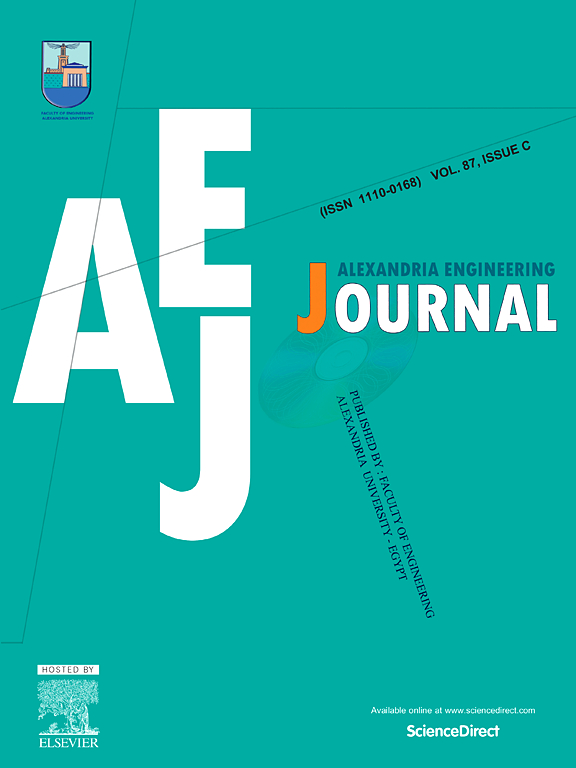基于遗传的随机集成森林学习在车联网云数据转换中的应用
IF 6.8
2区 工程技术
Q1 ENGINEERING, MULTIDISCIPLINARY
引用次数: 0
摘要
车联网(IoV)是一个不断变化的领域,汽车技术与互联的快速融合带来了一个网络安全风险巨大的新时代。调查的一个关键组成部分是彻底检查车联网基础设施的漏洞,这突出了潜在的妥协来源和云边缘计算中数据转换需要强大的网络安全措施的地方。此外,控制器区域网络(CAN)和电子控制单元(ecu)是汽车网络中连接用户数据从智能应用程序到电动汽车的关键点。因此,寻找一种安全的汽车数据转换方法来整合联网和自动驾驶汽车(cav),并调查特定的网络安全问题,是车联网生态系统中的关键挑战。为了确保车联网景观的安全发展,本研究引入了遗传算法随机森林(GA-RF)和遗传算法集成袋树(GA-EBT)两种创新遗传算法,以提高对车联网环境下网络威胁的识别能力。仿真结果表明,该混合算法取得了优异的性能,准确率高达99.92 %,平均绝对误差最低为0.0028,精密度、召回率和F1指标最高接近100% %。这些结果在真实的汽车数据转换数据集上特别值得注意。这些结果强调了所建议的策略在保护车联网系统免受可疑威胁方面的重要性。本文章由计算机程序翻译,如有差异,请以英文原文为准。
A genetic-based random ensemble forest learning for cloud-based automotive data transformation in internet of vehicle
The Internet of Vehicles (IoV) is a constantly changing field, and the fast convergence of automotive technology and connectivity has brought about a new era marked by enormous cybersecurity risks. A crucial component of the inquiry is a thorough examination of the IoV infrastructure's vulnerabilities, which highlights potential sources of compromise and places where strong cybersecurity measures are required for data transformations in cloud-edge computing. Additionally, the Controller Area Network (CAN) and the Electronic Control Units (ECUs) are critical points in automotive networking to connect user data from smart applications to electric vehicles. Therefore, finding a safe automotive data transformation approach for incorporating Connected and Autonomous Vehicles (CAVs) and investigating particular cybersecurity issues is a critical and key challenge in the IoV ecosystem. To ensure the safe development of the IoV landscape, the research introduces two innovative genetic algorithms, Genetic Algorithm Random Forest (GA-RF) and Genetic Algorithm Ensemble Bagged Trees (GA-EBT), to improve the identification of cyber threats in the IoV context. The simulation results demonstrate that the proposed hybrid algorithm achieves exceptional performance, attaining a high accuracy rate of 99.92 %, the lowest mean absolute error of 0.0028, and the highest precision, recall, and F1 measures near to 100 %. These results are especially noteworthy on real automotive data transformation datasets. These results highlight the significance of the suggested strategy for defending IoV systems from suspicious threats.
求助全文
通过发布文献求助,成功后即可免费获取论文全文。
去求助
来源期刊

alexandria engineering journal
Engineering-General Engineering
CiteScore
11.20
自引率
4.40%
发文量
1015
审稿时长
43 days
期刊介绍:
Alexandria Engineering Journal is an international journal devoted to publishing high quality papers in the field of engineering and applied science. Alexandria Engineering Journal is cited in the Engineering Information Services (EIS) and the Chemical Abstracts (CA). The papers published in Alexandria Engineering Journal are grouped into five sections, according to the following classification:
• Mechanical, Production, Marine and Textile Engineering
• Electrical Engineering, Computer Science and Nuclear Engineering
• Civil and Architecture Engineering
• Chemical Engineering and Applied Sciences
• Environmental Engineering
 求助内容:
求助内容: 应助结果提醒方式:
应助结果提醒方式:


